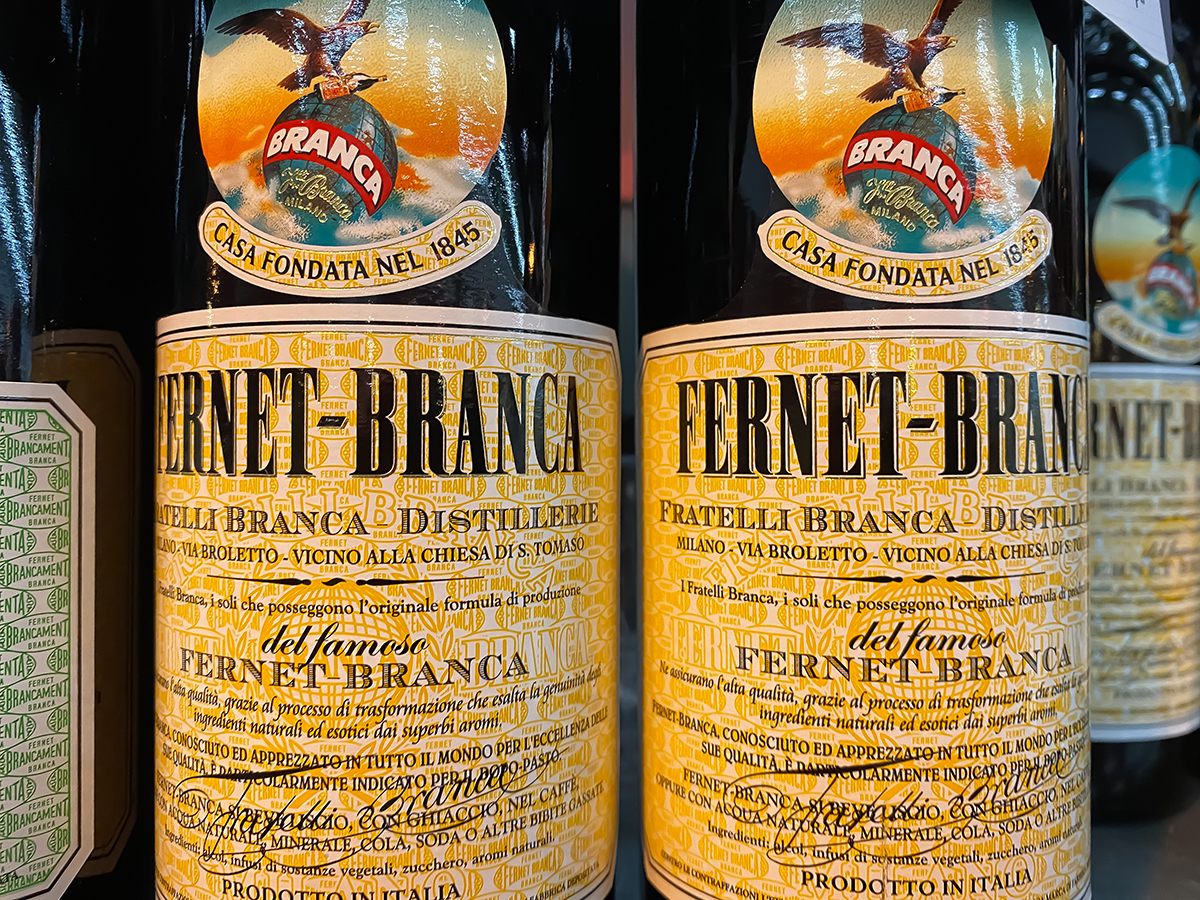You never forget your first time tasting fernet. It’s a bitter liquid salvo against your taste buds and nasal receptors. It is all at once woody, herbaceous and mentholated. To use the word “complex” would be a serious disservice. This is the kind of liquor you could spend hours sipping and dissecting without ever reaching any conclusive firm ground. All you know is that this stuff is bold — a love letter to the concept of intensity — and that you’ll have another, please. But even if you’ve come to enjoy this bitter concoction, you may not know what understand what it is. If only there was a fernet guide to explain it all. Ah, it looks like you’re in luck!
What is Fernet?
The first thing a fernet guide should tell you is that fernet is an Italian style of liqueur that sits comfortably in the amaro family of bitters. Most brands typically clock in at around 40% ABV. It is dark, the color of cola. Aromas of spices, citrus and menthol combine with an ephemeral “fernet” character on the nose. The palate is a bitter bruiser, but somehow manages to be pleasant and even “balanced”. There is no other spirit quite like it.
The invention of fernet is generally credited to Bernadino Branca who, as an amateur herbalist, created the first recipe in Milan in 1845. He had originally formulated and marketed the drink as a treatment for cholera. It turns out that people really liked the taste, whether they had cholera or not. It wasn’t long before Bernadino’s Fernet-Branca had mainlined itself into the drinks culture of the day.
Secret Recipe
Fernet is a “simple” infusion of herbs and botanicals in neutral spirit. The exact recipe and botanicals used varies depending on the producer and these recipes are closely guarded secrets. For instance, we know that Fernet-Branca is made using 27 botanicals. However, the company shares the identities of a precious few. In fact, several of the botanicals are kept well-hidden from the public, known only to members of the Branca family. Some of the known botanicals include galangal, gentian, myrrh, chamomile and saffron. That last one is important it seems. Fernet-Branca purportedly uses so much saffron in its recipe that the company purchases around 75% of the world’s saffron supply every year.
Each botanical is steeped in the spirit for a prescribed amount of time to reach the perfect level of extraction. The resulting spirit may then be rested in wood for six months or so, to let all the flavors and aromas marry. Finally, some producers may add a small amount of sugar to balance the flavor a bit, though it needs to be said that fernets are comparatively low in sugar compared to most other amari.

How to Serve
This is all well and good, but how are you supposed to drink the stuff? A proper fernet guide would explain that for many drinkers outside of Italy, bitter flavors are not well-understood. So, while you can certainly drink fernet neat or over ice, these are not the suggested serves for the fernet neophyte. As a bitter beverage in every sense of the word, fernet works wonderfully in an array of modern and classic cocktails. If you are a gin lover then go for the Savoy Hotel’s classic Hanky Panky cocktail, which is a brilliant blend of gin, sweet vermouth, and fernet. But maybe you’re a whisky drinker? Try a Toronto cocktail which balances Canadian whisky with fernet, Angostura bitters and a splash of simple syrup for something to keep you warm on those cold Canadian winter nights.
Probably one of the most simple and ingenious fernet serves is fernet and Coke. This is arguably an Argentinian invention and God bless ‘em for it. Argentina has a unique fascination with fernet as there is a long history of Italians emigrating there. In fact, Argentina consumes so much fernet that Fernet-Branca had to open another distillery just to supply its bitter-loving denizens. To make a fernet and coke, simply add 1-2 oz of fernet to a highball glass with ice and top with your favorite cola. The results will make you rethink the humble highball’s place in the cocktail hierarchy.
Brands Beyond Fernet-Branca
Today, Fernet-Branca is the brand that most people associate with the category. Some people even believe that Fernet-Branca IS the category. Again, a proper fernet guide would explain that there are actually quite a few other fernets out there that are worthy of your hard-earned booze dollars.
Fernet-Vallet is produced in Mexico where it was invented by liqueur maestro Henri Vallet in the 1860s. Fernet-Vallet is still wildly popular in its home country but in recent years it has gained a steady following from the cocktail crowd in the United States. This fernet is less bitter than Branca’s version with woody, herbaceous and cardamom notes on the nose.
Leopold Bros. in Colorado makes an excellent iteration on the style with Fernet Leopold. It is intensely fruity on the nose and can be almost port-like. It has notes of tea, citrus and mint sitting atop a mild bitterness. This is a great introduction to the category.
Letherbee in Chicago also produces a unique take on your new bitter obsession. Their Letherbee Fernet is spicy with notes of cinnamon and pepper coupled with spearmint, eucalyptus, and dark notes like coffee and chocolate. It is still bitter but has a slight sweetness to balance out the whole affair.
Fernet is definitely an experience in a glass. Even in the world of bitter amari, you won’t find a spirit quite like it. And maybe that’s for the best. One of fernet’s most endearing and enduring qualities is its singularity, its staunch resolution to be what it is without care for consumer fashion or favor. You’ll either love it or you’ll hate it. But either way, you will always remember your first fernet.
Feeling inspired by this Fernet guide?
With Distiller, you’ll always know what’s in the bottle before you spend a cent. Rate, Review, and Discover spirits. Head on over to Distiller, or download the app for iOS and Android today!
Want to enjoy Distiller ad-free plus exclusive discounts, giveaways, features and other perks? Join Distiller Pro today to support the Distiller platform and keep ads off of your screen.





